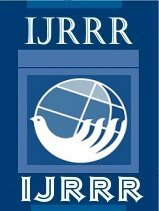|
Prateek Chourasia
Vinod Kumar Modi
Keywords:
Seismic stability, irregular buildings, plan asymmetry, curved beams, straight beams, structural dynamics, STAAD Pro Simulation.
Abstract:
Structural irregularities—such as plan asymmetry, floor size variations, and non-uniform beam configurations—greatly influence seismic performance, especially in high-seismicity zones like Zone V. This study evaluates the seismic behavior of a nine-story reinforced concrete frame building with curved and straight beams, focusing on the 3rd, 6th, and 9th floors. Using STAAD Pro, the building was analyzed under earthquake loads using Response Spectrum and Time History Analysis as per IS 1893:2016.
Key parameters assessed include bending moment, shear force, and displacement. Results indicate that straight beams exhibited a maximum bending moment of 85.2 kNm on the 3rd floor, while curved beams recorded a lower value of 72.5 kNm at the same level. Similarly, displacement at the 9th floor was reduced from 7.6 mm in straight beams to 5.4 mm in curved beams, demonstrating improved lateral stability. Shear forces were also consistently lower in curved beams across all levels.
The study further incorporates soil-structure interaction (SSI), which revealed that foundation response and seismic energy dissipation vary with geometry. These findings suggest that curved beams enhance seismic resilience through better force redistribution and reduced stress concentration. The study recommends adopting optimized beam configurations and SSI-sensitive foundation design to improve the safety and performance of irregular structures in seismic zones.
Key words: Seismic stability, irregular buildings, plan asymmetry, curved beams, straight beams, structural dynamics, STAAD Pro Simulation.
|
|

International Journal of Recent Research and Review

ISSN: 2277-8322
Vol. XVIII, Issue 1
March 2025
|
 PDF View
PDF View
PUBLISHED
March 2025
ISSUE
Vol. XVIII, Issue 1
SECTION
Articles
|


